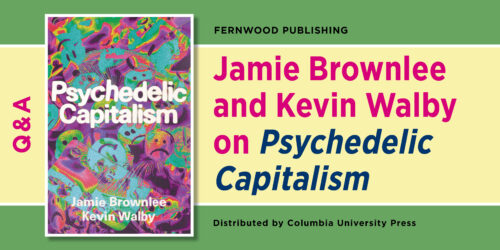Amy Allen on New Directions in Critical Theory series
Critical theory has emerged again as a vital component of understanding the contemporary epoch in relation to the past, the future, and perhaps most importantly, to the present.
Columbia University Press’s New Directions in Critical Theory series highlights the integral relationship from one critical perspective to another and another and another. We’ve interviewed Amy Allen, the editor of this series, in an “outside-the-text” approach to appreciating and understanding this series.
Q: What does New Directions in Critical Theory “mean” as a whole? That is, what do you think the most important strains and themes emerge in the series?
Amy Allen: My vision for the series was to provide a forum for re-envisioning the project of critical social theory. Traditionally, this project has been rooted in the work of the Frankfurt School, a group of German philosophers and social theorists whose best-known members are Max Horkheimer, Theodor Adorno, and Jürgen Habermas. The general impetus that drives the work of these thinkers is the goal of developing a theoretically informed, empirically grounded critical theory of society that takes as its practical aim the overcoming of domination. But this general impetus also motivates a number of other closely related theoretical approaches, including poststructuralist theory, feminist and queer theory, post-colonial and critical race theory, and so on. So the idea for the series was that it should be rooted in the project of critical theory as that has been understood in the Frankfurt school tradition, but that it should also publish works that push the boundaries of that tradition by engaging intellectually with alternative critical approaches.
Q: As the name of the series suggests, there is more than one new direction in critical theory today; what currents have you seen recede or dominate in the last ten years? Are those trends changing, in your opinion?
AA: I think that critical theory is in an exciting phase of reinventing and re-imagining itself, and I hope that the titles that we have published so far are indicative of that. For example, in the 1980s and 1990s, there were a series of very heated debates between Habermasian critical theorists, on the one hand, and poststructuralists, on the other hand. Those debates generated a lot of heat but not that much light. Now that the more polemical phase of that intellectual exchange has passed, we are seeing more constructive engagements across these traditions, and I think that the titles published in the series thus far reflect that spirit. The 1990s was also a time when critical theorists became focused on the politics of recognition (inspired by work of Axel Honneth and others on this theme), but the current discussion has begun to focus once more on economic issues and reviving the critique of capitalism (in this connection, the work of Nancy Fraser has been very important). Moreover, because critical theory has always been committed methodologically to critical, theoretical reflection on our actually existing social world (as opposed to a construction of an ideal theory of justice, for example), it has always been shaped by and responsive to events in the world. And I think the titles in the series are evidence of that responsiveness, whether the topic is immigration and citizenship issues (Stevens), the politics of race (Jones) and gender (Allen), the accelerating pace of globalization (Fraser), or violence and war and their aftermath (Lara, McAfee, Cavarero).
Q: How long have you edited this series? To what beginnings (or breaking off points) can you trace the need for a New Directions in Critical Theory series?
AA: I initially proposed the series to the press in 2006 and began editing it in 2007. The first title was Maria Pia Lara’s book, Narrating Evil. The need for the series was mainly institutional. It was my sense that there was at the time no comparable venue for cutting edge work in critical theory and that there was a pressing need for such a venue, since there were many scholars out there engaged in precisely this kind of work. In that sense, proposing the series was a way of trying to create an institutional framework in which the project of critical theory could flourish in the English-speaking world. The ease with which we have been able to find outstanding titles for the series has shown me that my initial sense of the need for this series was, in fact, accurate.
Q: There are several new books out in this series, one of them being Donna V. Jones’s The Racial Discourses of Life Philosophy; in what ways does “life philosophy” play an important role in post-colonial discourse?
AA: Well, I think that this is precisely the question that Jones’s book attempts to answer, and so the best answer I could give would probably be to say: buy the book and read it! But I can also say a little bit more. In particular, what interested me so much in this book was the way that Jones traces not only the vitalist elements in the discourse of negritude, but also the racialist logics in life philosophy. Given the recent resurgence of interest in life philosophy and the notion of the biopolitical, this strikes me as an extremely important theoretical intervention.
Q: Do you have any comments on the inter-connection of books in a series versus books published independently?
AA: Obviously many great and important books are not published under the auspices of a book series. And in my work on the series so far, I have passed on several really wonderful books simply because they were not a great fit for the series, either because of their topic or their methodology. I’ve tried to walk a fine line here, between maintaining a cohesiveness and identity for the series and pushing the boundaries of what is typically considered to be “critical theory.”





